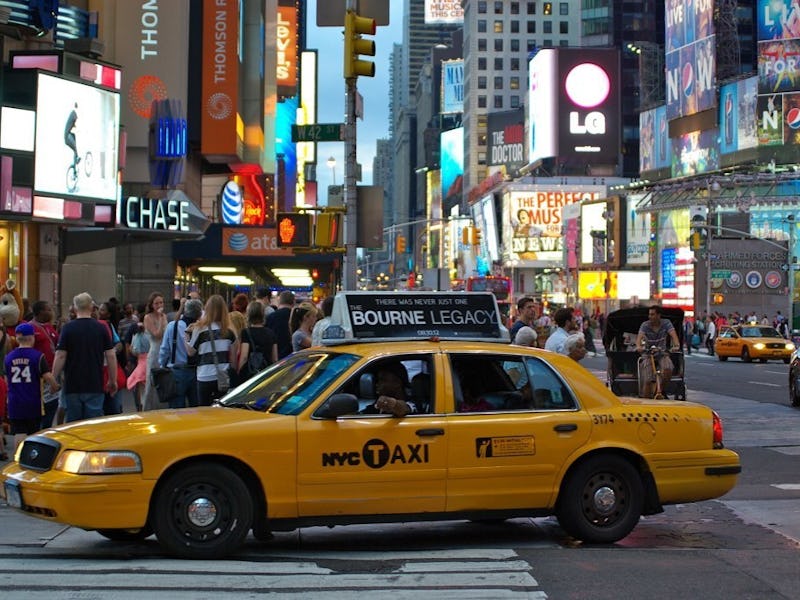Colorblind Self-Driving Cars Might Kill Off the Yellow Cab

The human eye is a complex evolutionary wonder, capable of seeing vivid colors and tracking motion at lightning speed — but human beings still manage to ram their cars into each other at an alarming rate. Take taxis, for example: a new study published Monday reveals that yellow cabs are less likely to get involved in accidents than blue taxis, as yellow is more noticeable in low lighting and human drivers have more time to respond. But self-driving cars won’t have this issue, as a specifically colored cab will just look like every other obstacle on the road — which may spell the end for New York City and many other metropolises’ iconic bumblebee-yellow cabs.
Scientists studied 4,175 yellow taxis and 12,525 blue taxis in Singapore over 36 months, combined with three months of data from 3,000 GPS logs to control for factors like speed and number of times a driver stopped.
The paper, which was published in the Proceedings of the National Academy of Sciences, found that yellow taxis were 19 percent less likely to get rear-ended compared to blue under nighttime street lighting. During the day, this figure fell to five percent. It’s still a measurable difference, and the researchers believe that switching all the cabs to yellow could solve the problem, saving $1.4 million per year.
But self-driving cars are unlikely to suffer from the same issues for a number of reasons. For starters, autonomous systems have inhuman reaction times. Elon Musk claimed the semi-autonomous Autopilot system makes Teslas “by far the safest cars on the road,” as the radar system can detect obstacles beyond human eyes. The system will spot an issue way before the human driver has a clue, and with future 5G cellular networks allowing cars to share collision data, it’s hard to think about autonomous car reaction times in the same terms.
There’s also the fact that the self-driving car’s vision interprets the world through a sci-fi style monochromatic filter. In this video shared by Tesla of its in-development autonomous car system, you’ll see that the cameras flatten the colors and identify objects in real-time. The cars use a combination of cameras and radar to detect objects, meaning that even if the camera makes it unclear what the object is, the radar will aid in creating a feed of the street as it’s driving.
With the rise of autonomous vehicles, Singapore might find it doesn’t need to paint its blue cars, unless it wants to liven up the place.